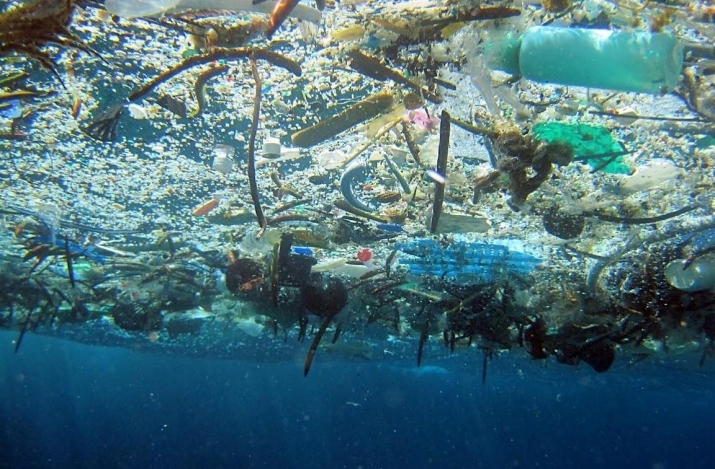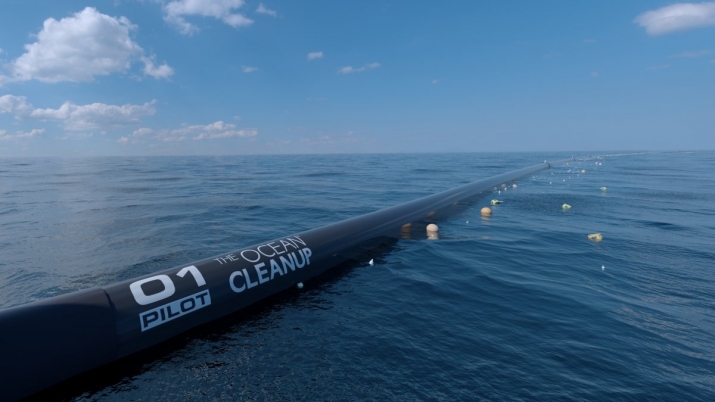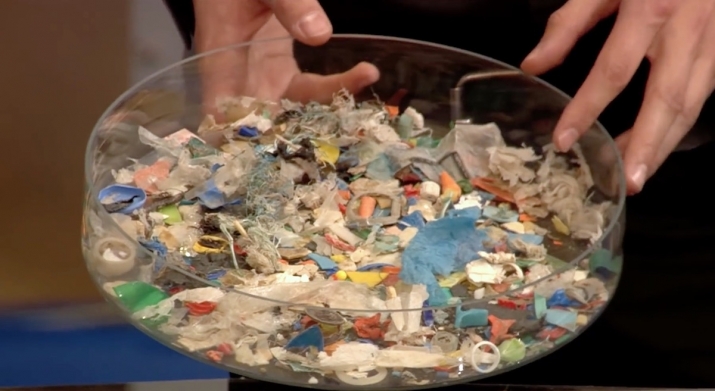The notorious Great Pacific Garbage Patch, an ugly reminder of humanity’s willful neglect of the natural environment, is big. Really big. Estimates of its extent range from the size of Texas to greater than the entire continental United States. Yet a resourceful entrepreneur from the Netherlands, 22-year-old Boyan Slat, is confident that he can halve the amount of plastic waste floating in the Pacific in as little five years using an innovative modular system that is poised to launch sooner than expected.
 Boyan Slat, who started The Ocean Cleanup project in 2013. Photo by Clement Rossignol. From reuters.com
Boyan Slat, who started The Ocean Cleanup project in 2013. Photo by Clement Rossignol. From reuters.comSlat’s non-profit startup, The Ocean Cleanup, has developed a passive collection system of floating U-shaped booms in kilometer-long arrays that use the ocean’s natural currents to skim swathes of ocean waste from the surface of the sea to collection points, where it can be extracted and shipped back to shore for recycling. With testing to take place off the coast of California this year, the ambitious plan should be ready to deploy two years ahead of schedule.
“Instead of late 2020, the cleanup will now start in just 12 months from now,” Slat told a press conference on 11 May. “And parts of it are already in production.” (Science Alert)
The Great Pacific Garbage Patch, also known as the Pacific trash vortex, is a loosely-packed mass of human-created waste in the central North Pacific Ocean characterized by high concentrations of plastics, chemical sludge, and other debris collected and contained within the currents of the North Pacific Gyre, a system of circulating ocean currents. Spread over an area estimated between 700,000 and 15 million square kilometers, the size of the Great Pacific Garbage Patch is hard to gauge—most of the debris is comprised of tiny long-lasting plastic particles suspended at or just below the surface of the ocean, while larger pieces that are visible to marine traffic are uncommon, making aircraft or satellite surveillance extremely difficult. The extent of the patch also depends on the level of plastic concentration used to define the affected area.
Unfortunately, the Great Pacific Garbage Patch is not the only marine trash vortex—merely the biggest. Similar trash vortexes exist in the Atlantic and Indian Oceans, as well as smaller marine regions, such as the North Sea. Each year, an additional 8 million tonnes of plastic waste finds its way into the world’s oceans, “which is the equivalent volume of two Empire State Buildings every week,” Slat emphasized, noting that about 50 of his floating barriers would be needed to halve the plastic waste in the Pacific over five years. (Deutsche Welle)
The quantity of debris in the Great Pacific Garbage Patch accumulates because much of it is not biodegradable—many plastics do not completely break down, but simply degrade into smaller particles. Some of these long-lasting plastics end up in the stomachs of marine animals, and their young, including fish, ocean mammals, turtles, seals, and sea birds, impacting the entire food chain. At the microscopic level, the floating debris can absorb organic pollutants from seawater, which can also be passed on during consumption by animals. In addition to the dangers to wildlife, many of these fish are consumed by humans, resulting in our ingestion of toxic chemicals. Research has indicates that plastic marine debris may affect more than 267 species worldwide.
The Ocean Cleanup’s original plan was to anchor its floating barriers to the seabed using a system similar to oil rigs, but the organization now says it will use anchors floating beneath the ocean’s surface, making it much more efficient. Slat says his collection system will also spare marine life while gathering human waste.
“The clean-up of the world's oceans is just around the corner,” said Slat. “Due to our attitude of ‘testing to learn’ until the technology is proven, I am confident that—with our expert partners—we will succeed in our mission.” (The Ocean Cleanup)


















